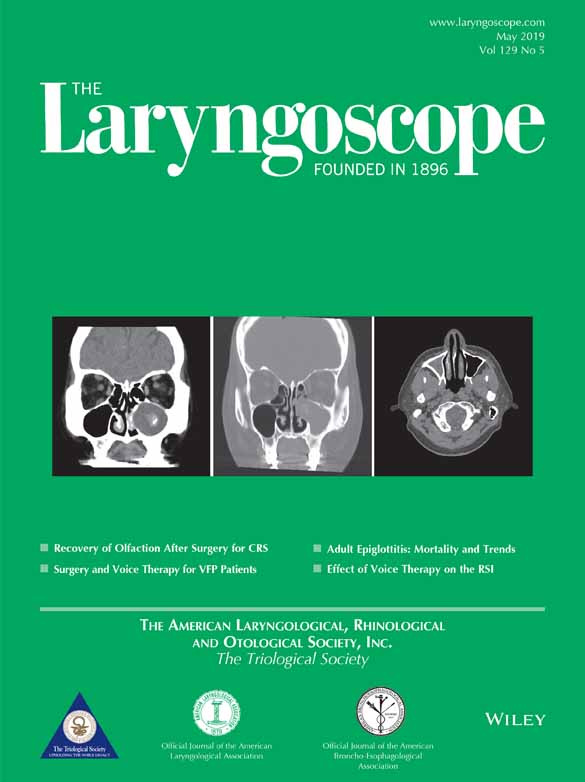Subglottic stenosis: An evaluation of an elderly treatment-seeking population
Presented at the American Laryngological Association Meeting, Combined Otolaryngology Spring Meetings, National Harbor, Maryland, U.S.A, April 18–20, 2018.
The authors have no funding, financial relationships, or conflicts of interest to disclose.
Abstract
Objectives/Hypothesis
To evaluate the demographics, etiology, intraoperative findings, and treatment outcomes of patients with subglottic stenosis (SGS), comparing those patients aged <65 years to an elderly population aged ≥65 years.
Study Design
Retrospective cohort study.
Methods
Nine-year retrospective review of patients with SGS. Forty-eight adults presented for evaluation and treatment of SGS between January 2008 and December 2016. At the time of presentation, 41 were aged <65 years and seven were aged ≥65 years.
Results
Comparing the aged <65 years group to the aged ≥65 years group, the etiology was idiopathic SGS in 50.0% versus 42.8%, intubation-related SGS in 22.5% versus 28.6%, and granulomatosis with polyangiitis in 27.5% versus 28.6%, respectively. No statistically significant difference was noted in the two groups when comparing the demographics, etiology, treatment, intraoperative findings, or intertreatment interval (ITI).
Conclusions
We sought to analyze an older patient population with SGS and found no statistically significant differences compared to a younger population. ITI trended toward older patients requiring surgery more frequently but was not significant.
Level of Evidence
4 Laryngoscope, 129:1155–1158, 2019




